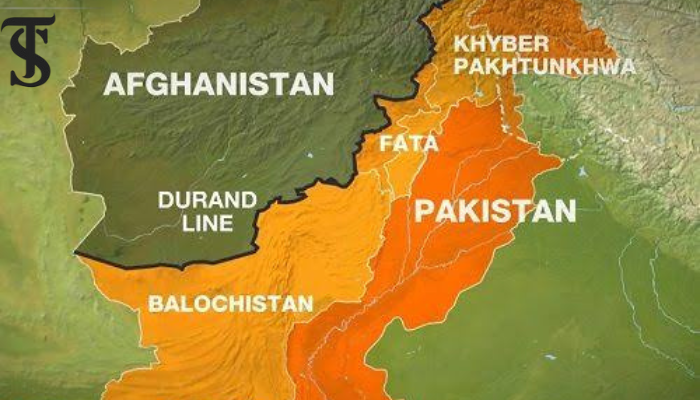Power, Water, and Diplomacy: The Impacts of China’s Brahmaputra Mega-Dam

- Regional Implications: China's mega-dam on the Brahmaputra raises concerns about water security, ecological damage, and geopolitical tensions, particularly with India and Bangladesh.
- Geopolitical Tensions: The dam's location near the Sino-Indian border risks exacerbating strained relations and impacts regional water-sharing dynamics.
- Call for Cooperation: Transparent dialogue and trilateral agreements between China, India, and Bangladesh are essential to address water flow, ecological concerns, and equitable resource sharing.
China, the world’s largest producer of hydroelectric power, continues to expand its hydropower projects, with its new mega-dam drawing attention from experts and regional stakeholders alike. Situated on the Brahmaputra River (known as the Yarlung Tsangpo in Tibet), this colossal infrastructure project is part of China’s ambitious efforts to harness renewable energy. However, the dam raises significant concerns about its regional and geopolitical implications, particularly for downstream countries such as India and Bangladesh.
The Mega-Dam: An Overview:
China’s new mega-dam is planned for construction in the Medog County of the Tibet Autonomous Region, near the Indian border. The world’s most powerful hydropower plant is expected to generate nearly three times the energy output of the Three Gorges Dam, currently the largest hydroelectric project globally. While this project aligns with China’s goal of achieving carbon neutrality by 2060, its scale and location have triggered concerns among neighboring nations.
China’s new mega-dam near the Brahmaputra River raises seismic, environmental, and diplomatic concerns. India urges transparency and protection for downstream states.
Regional Implications:
1. Water Security and Downstream Impact:
The Brahmaputra River is a lifeline for millions in India and Bangladesh, providing water for agriculture, drinking, and livelihoods. Critics argue that China’s dam could alter the river’s flow, impacting water availability downstream. While China claims the dam will not significantly divert water, reduced flow or sudden releases could exacerbate droughts and floods in the lower riparian regions.
2. Geopolitical Tensions:
The dam’s location near the disputed Sino-Indian border adds a layer of complexity. India has voiced concerns about China’s unilateral decisions on transboundary rivers without consulting downstream countries. This project may exacerbate already strained Sino-Indian relations, particularly after recent border clashes. Bangladesh, as the third major stakeholder, also risks facing adverse effects on its water systems and agriculture.
3. Ecological Consequences:
Large dams often lead to environmental degradation, including habitat loss, sedimentation issues, and changes in aquatic ecosystems. This mega-dam could further strain the fragile Himalayan ecology, already vulnerable to climate change. The project could disrupt sediment flow essential for the Brahmaputra delta, potentially impacting agriculture and biodiversity.
4. Power and Regional Influence:
China’s hydroelectric projects also signify its dominance over shared river systems. The new dam would grant China control over a significant portion of the Brahmaputra’s upstream flow, giving it leverage in water-sharing negotiations with neighboring countries. This could deepen the power asymmetry in the region and heighten dependence on Chinese diplomacy.
China’s Perspective:
From Beijing’s viewpoint, the mega-dam is an essential step toward meeting its renewable energy targets and reducing carbon emissions. Hydropower remains a cornerstone of China’s energy strategy, providing clean and reliable energy to fuel its economic growth. Additionally, China argues that large-scale dams offer flood control and improved water management in the face of climate change.
A Call for Cooperation:
Regional cooperation on water resource management is essential to mitigate potential conflicts. Establishing a multilateral framework involving China, India, and Bangladesh could help address concerns related to water sharing, flow regulation, and environmental protection. Transparent dialogue and data sharing are critical to building trust and ensuring equitable access to the Brahmaputra’s resources.
The Way Forward:
The new mega-dam underscores the need for a cooperative approach to managing shared water resources in the region.
Here are some steps that can be taken:
Strengthened Dialogue:
Establish a trilateral water-sharing agreement between China, India, and Bangladesh. Transparency in sharing hydrological data is crucial for building trust.
Environmental Safeguards:
China should conduct environmental impact assessments with input from affected countries to minimize ecological damage.
International Mediation:
Involving global organizations, such as the United Nations, could help mediate disputes and ensure equitable access to water resources.
Conclusion:
While China’s new mega-dam represents a technological and engineering marvel, its regional implications cannot be overlooked. Balancing energy needs with ecological preservation and equitable resource sharing is a challenge that demands a collaborative approach. As this project progresses, its success will depend not only on engineering excellence but also on China’s willingness to address the concerns of its neighbors through dialogue and diplomacy.

Sahibzada Sultan Mohammad Bahoo
The author has a keen interest in politics and philosophy.





